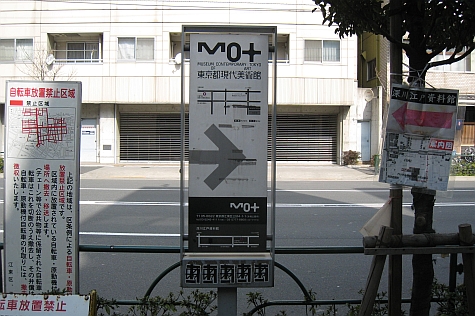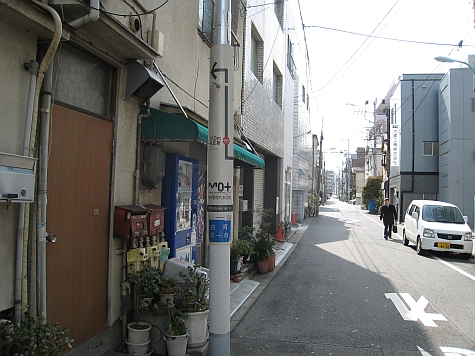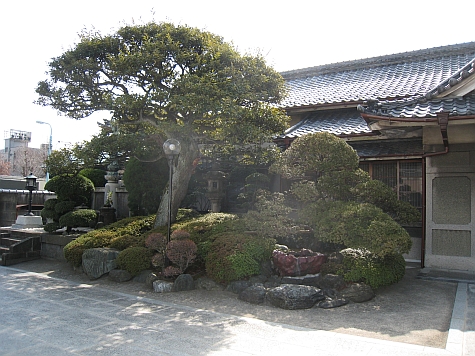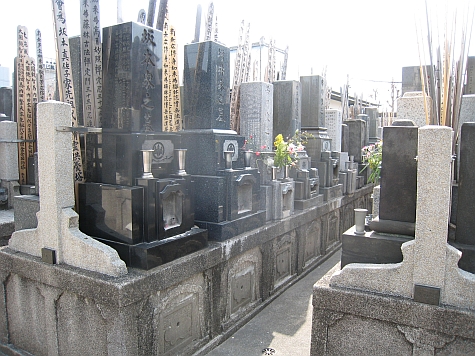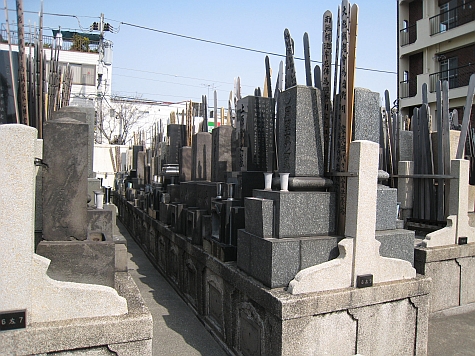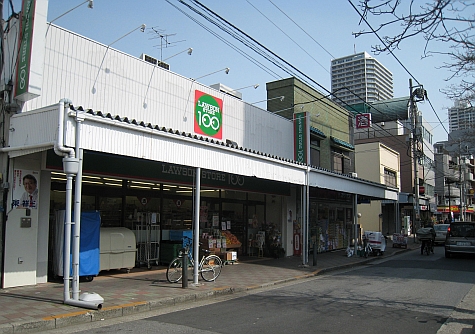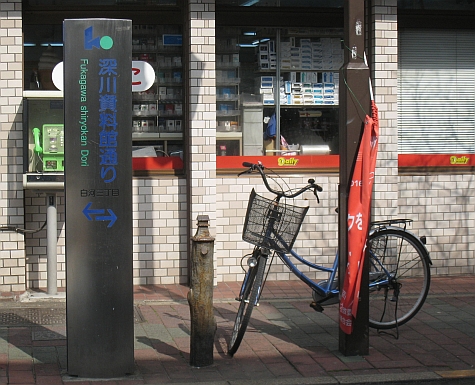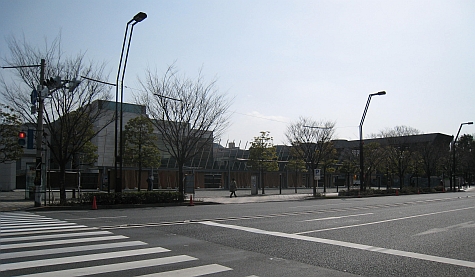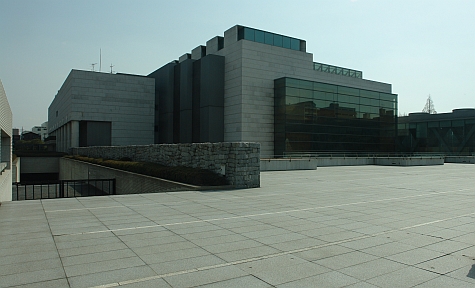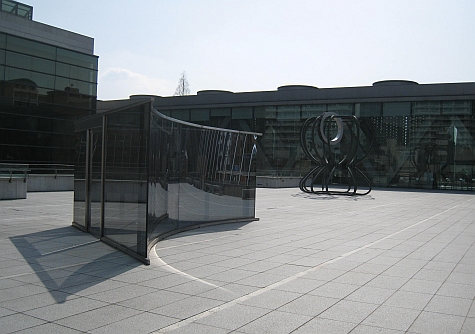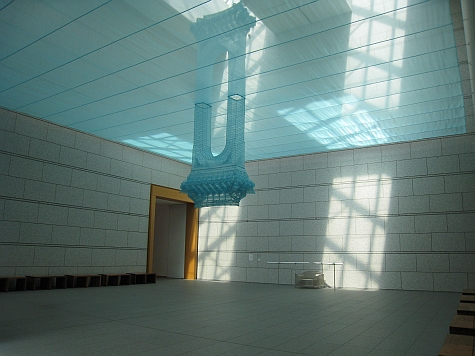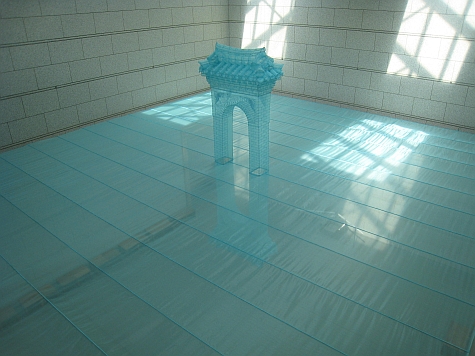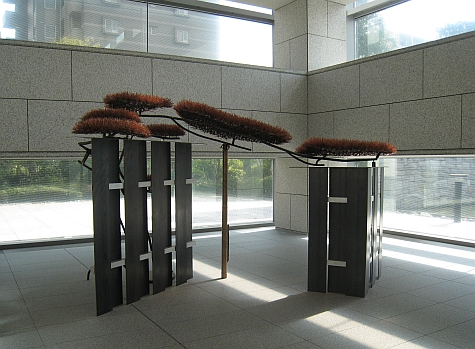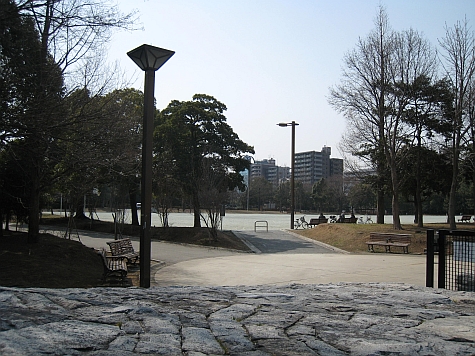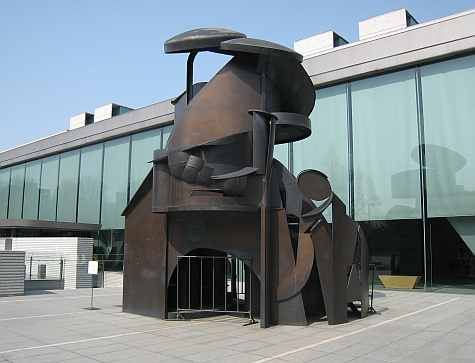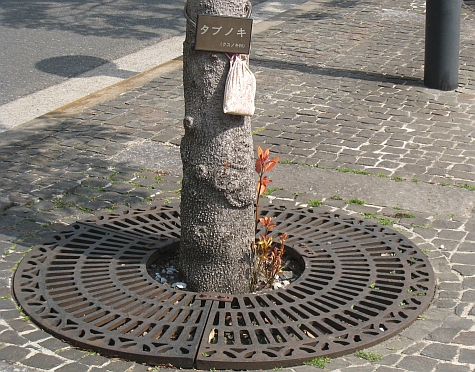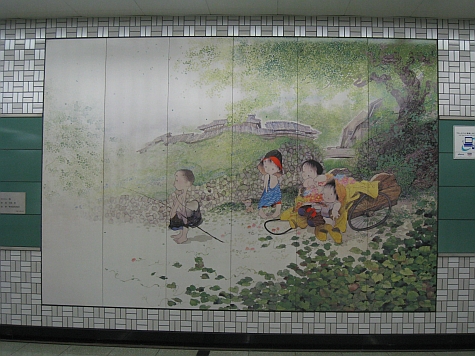The signs lead back to some small streets. The Shirakawa area is a east of the Sumida River, so it seems more residential and out of the way for tourists.
In another city, walking through back alleys might feel threatening, but in Tokyo, ever block is neat and well-kept.
Turning around a corner, I found a neighbourhood temple.
I presume that the large boulder out front is sacred.
To the left of those front doors, Japanese gardening has produced a tree that is the full size version of a bonsai.
Across the side street is the cemetery, with a prominent statue.

The tomb markers are packed together tightly. The many painted wooden planks suggest that (a) friends and relatives have visited recently, and (b) the temple is well-funded.
Looking left, the apartments across the street show that the cemetery is in the middle of a developed urban area.
Down the street is one of the ubiquitous Lawson stores. They’re more than convenience stores, but somewhat less than supermarkets.
I’m glad that some street signs are in English, as a reassurance of direction.
On the main street, a construction team was working on a small lot.
I was amused at the playpen for the kids as the childcare worker took them for a walk.
The MoT is on a campus on the south side of the street. There were some hoardings for construction obstructing the view.
Befitting a museum of contemporary art, the building is modern.
On the front courtyard is some large scale sculptures.
The temporary exhibitions were being changed, so only the permanent galleries were open. In the large first gallery was Reflection, by Do-Ho Suh … or at least the lower view of it.
On the second floor was the top view.
Back down the stairs, the windows reveal the trees and landscape outside.
The feeling of nature inside complements the nature outside.
South of the MoT is Kiba Park. It didn’t see much, so I guess the park is landscaped to make the spaces more intimate.
Turning back to the MOT building, a moat flows on the ground floor.
The pond is a natural attraction for mothers with kids out for the day.
The large sculpture would seem a natural for kids to run up and down, but it was blocked off that day.
Further east, a round sculpture has been positioned in the the upper pond.
In the southeast corner of the campus is a Wish Tree for Tokyo, by Yoko Ono.
On the east side of the MoT building, I was impressed by the line of trees on Daimon Street.
I don’t understand the meaning of the charm attached to the base of the tree.
Returning to the subway station, I passed by a class of kids probably on their way for lunch.
Back at the Kiyosumi-Shirakawa metro stop, I had to figure out how to pay the fares again. The cards that worked last August aren’t sold any more, so it’s back to cash.
Inside the metro station is a reminder that we’re near an art gallery: a mural.
The Museum of Contemporary Art Tokyo was a destination that was worth seeing. In Tokyo, though, every trip can be an adventure

